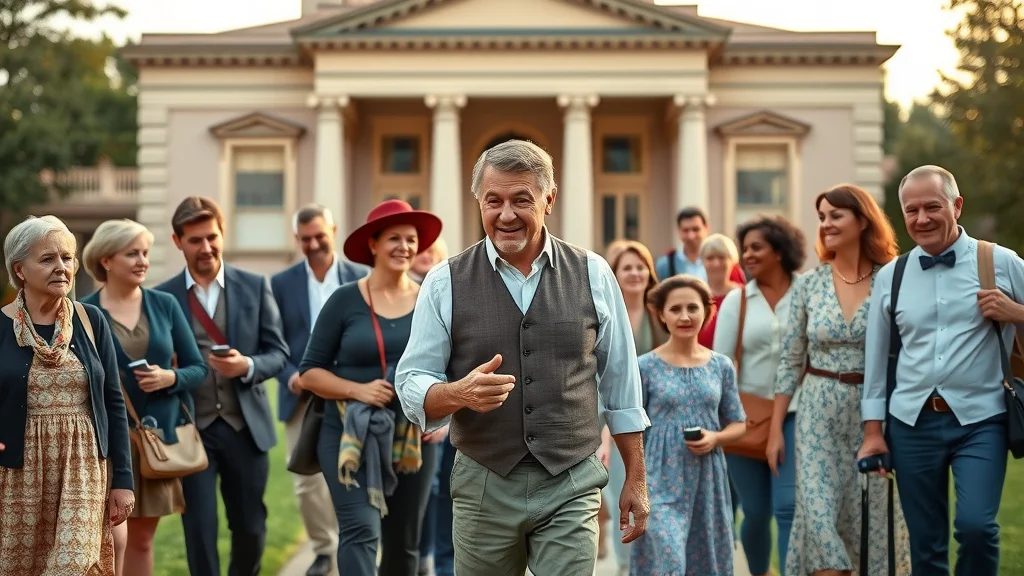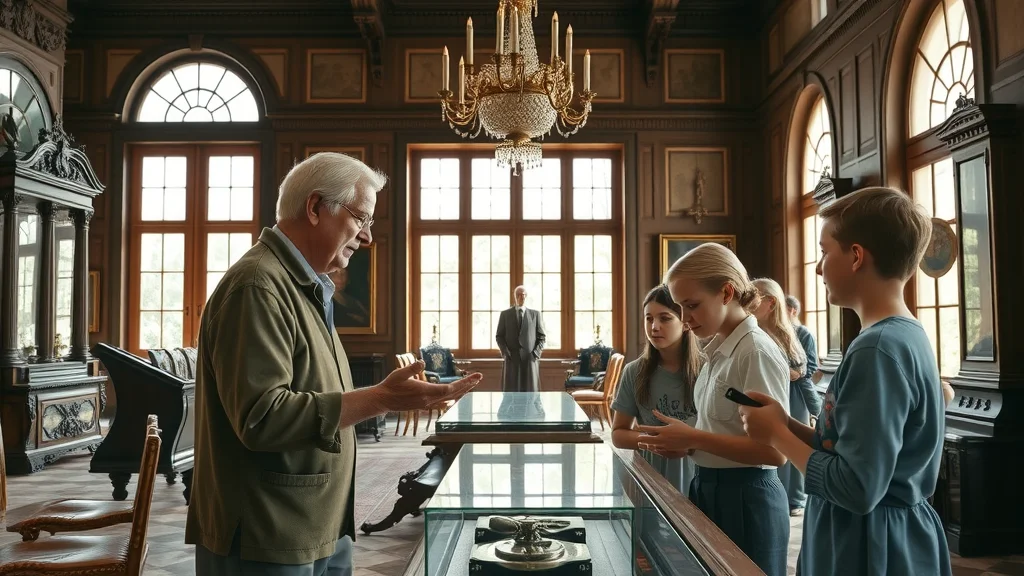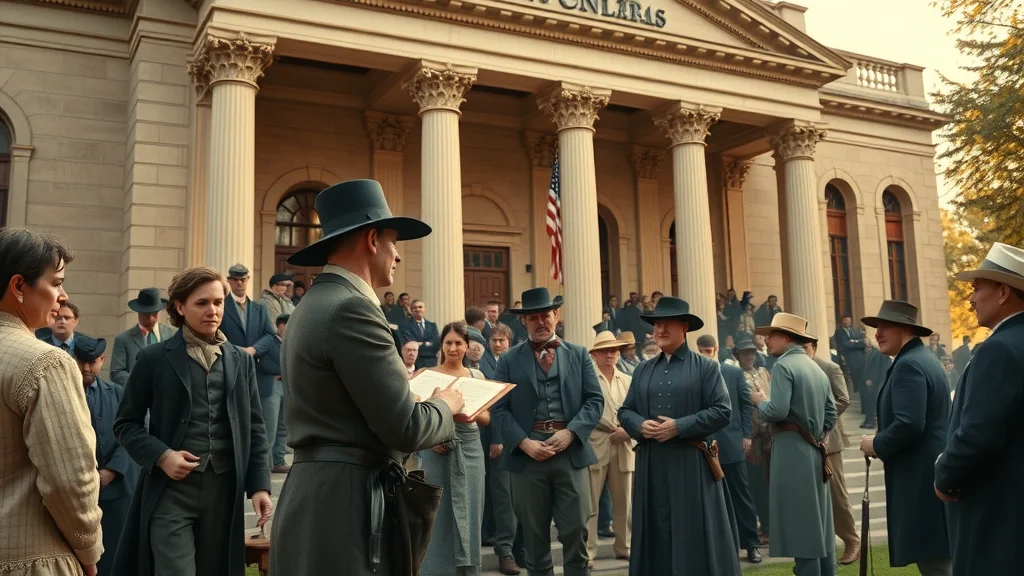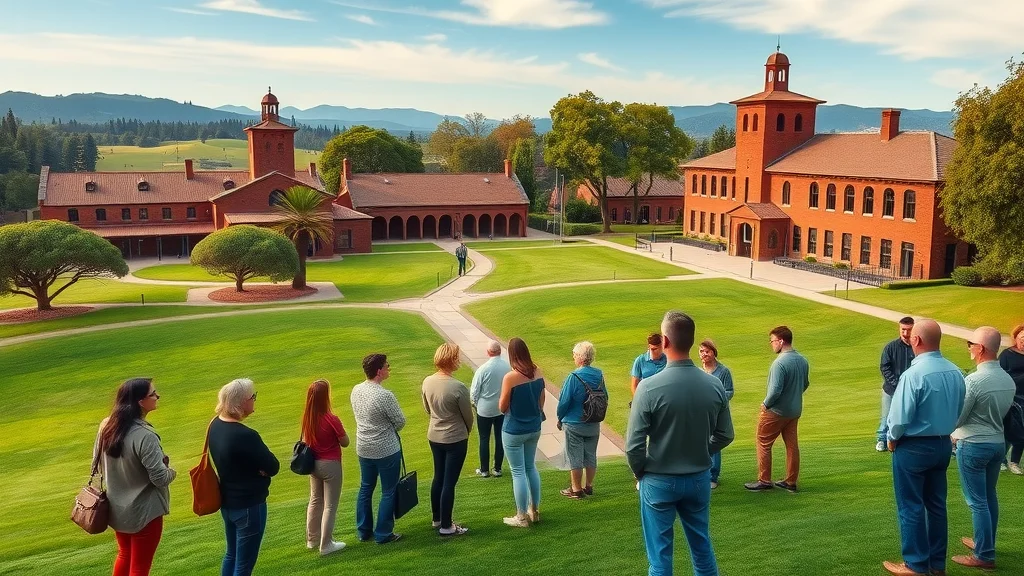Exploring the Past: Why Guided Historical Tours Invite Us to See History Anew
Have you ever wandered through an old building or park, wondering about the stories behind its walls or the land beneath your feet? While reading about history can offer knowledge, there’s a compelling difference when those stories are brought to life by passionate experts. Guided historical tours have rapidly become one of the most engaging ways to connect with the past—not only revealing long-forgotten facts but also sparking the imagination to visualize times long gone. As California celebrates its 175th anniversary of statehood this year, opportunities abound to explore living history in person. For students, families, or curious minds of any age, historic sites across the state present a fresh invitation to engage, learn, and reflect.
The growing popularity of guided historical tours reflects more than nostalgia. In an age of fast-paced technology and information overload, these tours carve out time for meaningful connection—with place, with heritage, and with each other. In California’s 280 state parks, where the fusion of natural beauty and human history is preserved, guided tours offer context, depth, and often a reexamination of accepted stories. They are uniquely designed to inspire, educate, and even provoke thought, weaving together cultural treasures and historical insights that might otherwise be missed. The significance of choosing guided exploration over mere observation can’t be understated—it’s an educational experience that instills respect for the enduring value of our shared spaces.

Revealing the Experience: What Makes Guided Historical Tours Essential for Modern Learning
What exactly happens on a guided historical tour, and why do they matter so much to our understanding of history today? At their core, these tours are immersive experiences led by knowledgeable guides—sometimes park rangers, sometimes community experts, and often volunteers deeply passionate about preserving the stories of a site. Through their narratives, visitors are introduced to the layered significance of a location: its cultural milestones, architectural quirks, natural wonders, and the everyday lives of the people who shaped its past. Guided tours offer not only facts but interpretation, context, and at times, challenging questions about what was, what is, and what might be.
A lack of deep historical context can leave important narratives untold, resulting in a surface-level appreciation of even the most iconic sites. Overlooking this dimension risks disconnecting younger generations from their state’s foundational events and the contributions of diverse communities. Guided tours counter that risk by translating history from static museum plaques or dusty textbooks into a vivid, dynamic experience. Sites such as Benicia Capitol State Historic Park offer more than just a chance to “see the furniture”—they provide direct access to artifacts, spaces, and the living stories that shaped California’s political and cultural trajectory. Without such programs, the educational and inspirational potential of these places remains locked away.

Why Guided Historical Tours Transform Understanding in California’s State Parks
Guided historical tours stand apart as a powerful educational tool—bridging gaps in knowledge and breaking down barriers to appreciation. Through the expertise of their guides and the thoughtfully preserved settings, these tours transform passive observation into active participation. Visitors can step into historical rooms furnished with authentic objects, hear stories woven from multiple cultural viewpoints, and ask questions that textbooks seldom answer. At Benicia Capitol State Historic Park, for example, the fusion of preserved interiors and expert-led interpretation results in revelations about the state’s formative years—encouraging visitors to see familiar landmarks in new and meaningful ways.
More than simple fact-finding, guided historical tours cater to diverse interests and backgrounds, making history personal and relevant. By encouraging curiosity and critical thinking, these experiences help individuals connect with their environment, fostering a sense of stewardship and responsibility. This goes far beyond entertainment; it’s active learning that underlines California State Parks’ mission to inspire, educate, and provide for the health and well-being of all residents. Guided tours nurture a respect for both natural beauty and complex cultural legacies, offering a compelling answer to why history matters in the world today.
Uncovering Forgotten Narratives: The Role of Guided Tours in Inclusive Storytelling

Even as California celebrates milestones like its 175th statehood anniversary, there is a growing awareness that history should be inclusive, not selective. Many guided historical tours have evolved to highlight not just the dominant narratives but the experiences of diverse communities—incorporating insights from Latino Heritage Month celebrations, reexamined interpretive programs, and local contributions. Such inclusiveness is vital, as recognizing all stories deepens understanding and brings communities together. With guides trained to contextualize difficult histories and celebrate marginalized voices, the tours align with ongoing commitments to access, relevance, and equity in outdoor recreation.
This commitment is visible in special events, community-driven projects, and new technologies like virtual and augmented reality apps developed by California State Parks. Whether in-person or digital, these guided experiences invite people from all backgrounds to step into history—finding resonance, pride, and sometimes inspiration where it was previously overlooked. In this way, guided historical tours are not simply educational—they are transformative, acting as avenues for dialogue, empathy, and empowerment.
Experiencing History in Real Time: Interactive Touring and Living Exhibits
Guided historical tours take visitors far beyond ordinary sightseeing by incorporating interactive elements and fully furnished environments. Buildings like the Benicia Capitol State Historic Park are meticulously restored to reflect their original eras, allowing guests to visualize and feel the significance of past events. Guides invite questions, encourage discussion, and make connections between California’s present challenges and its storied past—highlighting, for example, how the effects of wildfire, drought, and climate change echo historical patterns of adaptation and resilience.

Seasonal events, living history demonstrations, or state-wide celebrations such as California’s 175th anniversary enhance these tours, offering deeper engagement and a sense of participation in something larger than oneself. These hands-on experiences create lasting memories and foster a lifelong interest in preservation and public service—helping today’s visitors become tomorrow’s custodians of state heritage.
From Self-Guided Wandering to Guided Discovery: Maximizing Your Visit’s Impact
While self-guided exploration has its place, the difference that an expert brings cannot be overstated. For many, a self-paced wander might result in missed details, unanswered questions, or a superficial impression. In contrast, a skilled guide provides layers of insight—drawing connections between artifacts, illuminating the motivations behind restoration projects, and weaving in stories both grand and intimate. At California’s historic sites, guided tours are often tailored to the interests of diverse groups, from students on field trips to adult lifelong learners to multigenerational families, ensuring everyone leaves with new understanding and new questions.
Engagement with trained interpreters can spark transformative learning moments. The right question, the right story, delivered at just the right time—these are the experiences that stay with visitors well beyond their time in the park. For those looking to get the most out of their visit, opting for a guided historical tour is the surest way to unlock the depth and richness of California’s extraordinary state parks.
California State Parks: Dedicated to Preservation, Education, and Inspiration
Underpinning every guided historical tour within California State Parks is a commitment to stewardship and accessibility. The mission is clear: to preserve biological diversity, protect cultural treasures, and create opportunities for high-quality outdoor recreation that educates and inspires. Programs are intentionally designed to engage all visitors, from expert historians to novices, and strive to contextualize history in ways that matter for today’s diverse population. No matter the park, there’s a focus on delivering enriching experiences that bridge past and present.
California State Parks’ evolving interpretive programs are a testament to long-term thinking. By continuously reexamining exhibits, encouraging community participation, and responding proactively to environmental and societal changes, the institution sets a standard for inclusive and resilient storytelling. Integrated technology—including reservation systems, educational apps, and photo contests—brings history alive, ensuring that every guest has the tools and knowledge to connect meaningfully with the landscape and its legacy.
Ultimately, these efforts position guided historical tours not simply as offerings, but as invitations: to learn, to reflect, and to contribute to the ongoing narrative of California. They are built on the belief that in understanding our shared past, we foster healthier, more inspired communities for the future.
How Real Visitors Describe the Difference of Guided Historical Tours
For those who wonder whether guided historical tours truly enhance the experience, firsthand accounts provide compelling evidence. Consider one visitor’s reflection after participating in a docent-led tour, revealing how expert interpretation brings life and value to each visit:
I had been here previously but did a self guided tour. This time, docent Charlie Clement, offered a lot of interesting information. He really does a great job. We really enjoyed it.
As this experience illustrates, the insights and enthusiasm of a knowledgeable guide can reveal layers of history that might otherwise remain hidden. For countless visitors, taking part in a guided historical tour is the difference between seeing and understanding, between passing through the present and stepping meaningfully into the past. It’s a difference that invites all future visitors to experience California’s storied landmarks through fresh eyes and deeper appreciation.
What Guided Historical Tours Mean for the Future of Education and Preservation
The future of heritage education is unfolding today in California’s parks, where guided historical tours set a gold standard for immersive, accessible learning. As communities seek ways to balance preservation, inspiration, and inclusivity, these experiences offer a clear model—melding expert-led education with community engagement and environmental stewardship. With each story shared and each visitor inspired, the impact of guided historical tours reaches far beyond the parks themselves—contributing to a more informed, connected, and resilient society.
By inviting the public into restored capitols, living history events, and hands-on interpretive programs, places like Benicia Capitol State Historic Park reinforce the lasting significance of guided exploration. The collaboration between passionate guides and thoughtful curation continues to redefine how we learn from our past. For all who seek to understand and appreciate California’s remarkable story, guided historical tours are more than a visit—they are a discovery in every sense.
Contact the Experts at Benicia Capitol State Historic Park
If you’d like to learn more about how guided historical tours could benefit your understanding and enjoyment of California’s heritage, contact the team at Benicia Capitol State Historic Park.
📍 Address: 115 W G St, Benicia, CA 94510, USA
📞 Phone: +1 707-745-3385
🌐 Website: http://www.parks.ca.gov/
Benicia Capitol State Historic Park Location and Hours
🕒 Hours of Operation:
📅 Monday: ❌ Closed
📅 Tuesday: ❌ Closed
📅 Wednesday: ❌ Closed
📅 Thursday: 12:00 PM – 4:00 PM
📅 Friday: 10:00 AM – 5:00 PM
📅 Saturday: 10:00 AM – 5:00 PM
📅 Sunday: 10:00 AM – 5:00 PM

 Add Row
Add Row  Add
Add 





Write A Comment